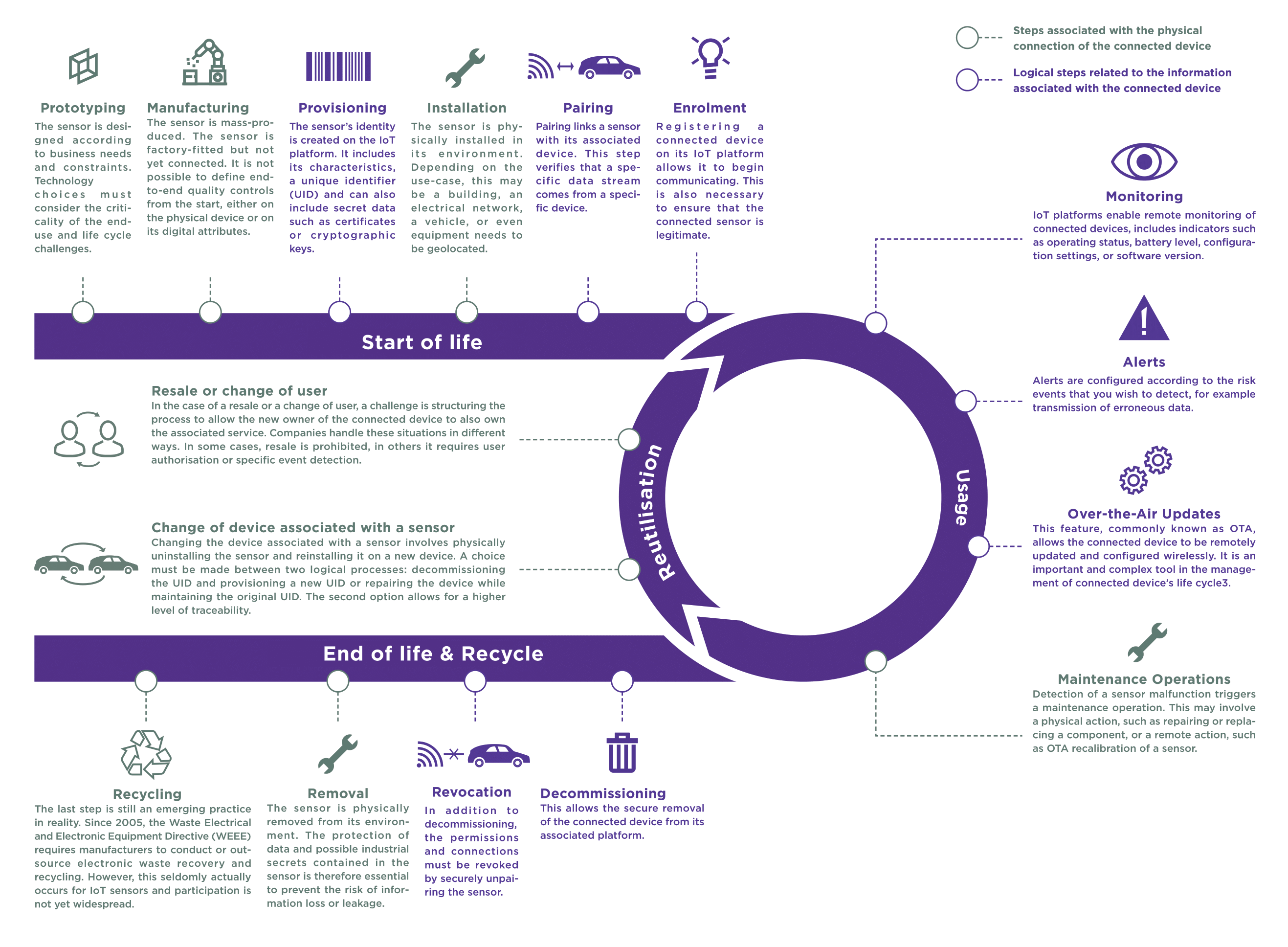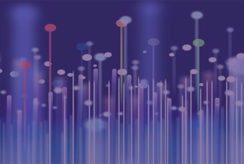IoT : keys for scaling successfully
Many companies today see the Internet of Things as a new way to transform their business, create service offerings, increase operational performance, or adapt to new regulations. However, industrialisation and the increasing scale of IoT projects, which can involve millions of connected devices, make it imperative to prepare for the management of the connective devices’ life cycle in order to ensure the longevity of implemented solutions.
What are the life cycle stages for connected devices? What impacts do they have on IoT projects? Which teams are impacted? What is the level of integration with the existing IS and more broadly with the project ecosystem? This publication aims to provide the answers to enable successful IoT scaling.
Typical stages of the connected device life cycle
Environment Integration: a driver for successful life cycle management
In addition to defining a connected device’s life cycle, it is important to identify the key stakeholders (sensor manufacturers, logistics teams, field, in charge of the IoT platform, etc.). The overall management of the connected device life cycle requires the consolidation of information held by each of the stakeholders. Therefore, it is essential to formally establish the inputs and activities expected from each of the stakeholders on the physical or logical life cycle stages.
Simultaneously, to ensure data integrity, it is recommended to create a single repository of connected devices with their associated status. This repository should be updated by the both the business and by each of the teams mentioned above. This repository can be composed of one or multiple databases, however the access portal must be unique. The appointment of a repository manager for the connected devices is required to ensure overall data integrity.
Conclusion
Thus, each stage of the connected device life cycle influences the viability of IoT solutions. It is therefore essential to anticipate the entire cycle from the scoping phase by working closely with sensor manufacturers to ensure that all challenges are considered during the design process.
To guarantee the success of this overall management, using shared repositories, defining a governance framework and selecting open and scalable information system integration methods should be prioritised. Success is also highly dependent on collaboration between the business lines and the CIOs as early as possible. This prevents IoT projects from being delayed when trying to scale-up by capacity of the IT teams. Companies must define IoT operating models adapted to their business objectives.
OTA illustrates how technological solutions can improve the life cycle management for connected devices. OTA offers a significant benefit in terms of maintaining security and operations, as updates can be made in an automated and scheduled manner. Failure to treat OTA as a prerequisite for the validation of a scaleable IoT implementation would be a mistake.
There are other technological solutions, such as Digital Twins, which promise to facilitate the more complex aspects of large-scale life cycle management, such as simulations during sensors prototyping or predictive maintenance. In the coming years, these subjects will be at the core of IoT project implementation.




